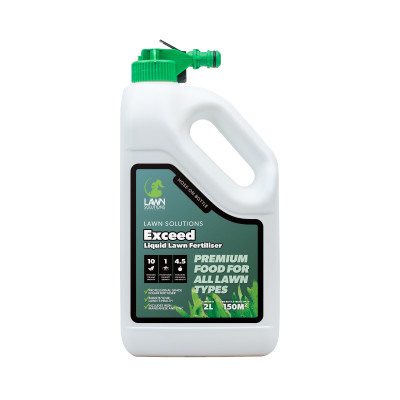Properly designing and planning your garden is a crucial part of its overall success; your lawn should be a major consideration.
How much lawn you will have will depend on a number of factors:
Environmental
How much sunlight versus shade do you have in your garden?
What soil type do you have?
What are the typical climatic challenges in your region?
Lifestyle
Do you have kids, pets or both?
How is your lawn typically used by you and your family?
Available space
What space do you have?
Lawns can be used in many different spaces, both large and small. From conventional lawns to small courtyards and roof terraces. Lawns can be used to your advantage in creative ways.
Scale Drawing
Putting together a scale drawing on some graph paper is an excellent way of getting your garden plan in order. Clearly mark all the main features, existing and proposed, house, paving, driveway, deck, shed, pool, garden beds, and of course your lawn.
It is much easier to make changes with a rubber and pencil during the planning stages than it is during the landscaping process. Not to mention much cheaper.
The idea of drawing something to scale is that measurements on the plan are in the same proportion as they are on the ground. This enables you to convert from one to the other both accurately and quickly. Typical scale sizes for residential landscaping plans are 1:50 and 1:100. At a scale of 1:50, 1mm on the plan represents 100mm on the ground. A scale ruler is an essential tool for this sort of work, while doing the drawing and also to measure from the plan to get the on-ground dimensions.
Once completed, a scale drawing makes life a lot easier when calculating areas, volumes and quantities for the various components, such as the turf.
Adding some colour to the plan helps clarify the different areas, green for the lawn; brown for the soil, for example. It also makes it easier to read.
Balance
When planning your garden, it’s important to get the right balance between hard surfaces like paving and decks, and your garden beds and lawn.
Soft and hard surface ratios in your garden
The percentage of hard and soft surfaces is allocated for your property by your local council. This is particularly relevant for new homes, renovations and extensions where BASIC’s requirements give more credits for lawns to reduce costly storm water.
Hard surfaces prevent water from absorbing into the soil, resulting in more water to run off, which in turn puts more pressure on the storm water system. This can lead to flooding, which unfortunately we all know, can be a very nasty business.
Water and Maintenance
Available water, mowing and general maintenance may well influence the size of your lawn. Choosing a drought tolerant, low maintenance variety will make a big difference to your pocket and your time compared to other more maintenance demanding varieties.
For turf suppliers in your area click here.
Check out the Lawn Solutions Australia lawn care page for more helpful tips and advice here.


